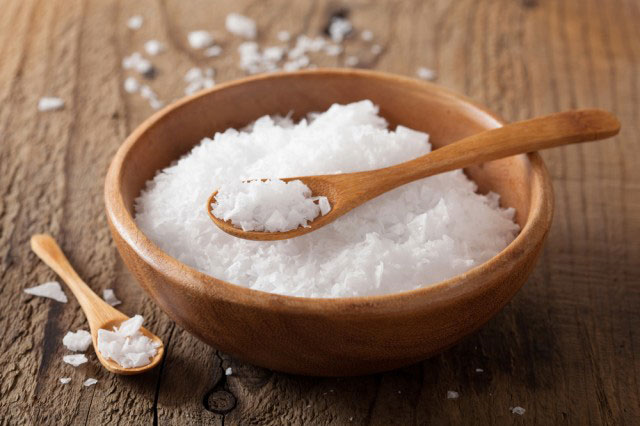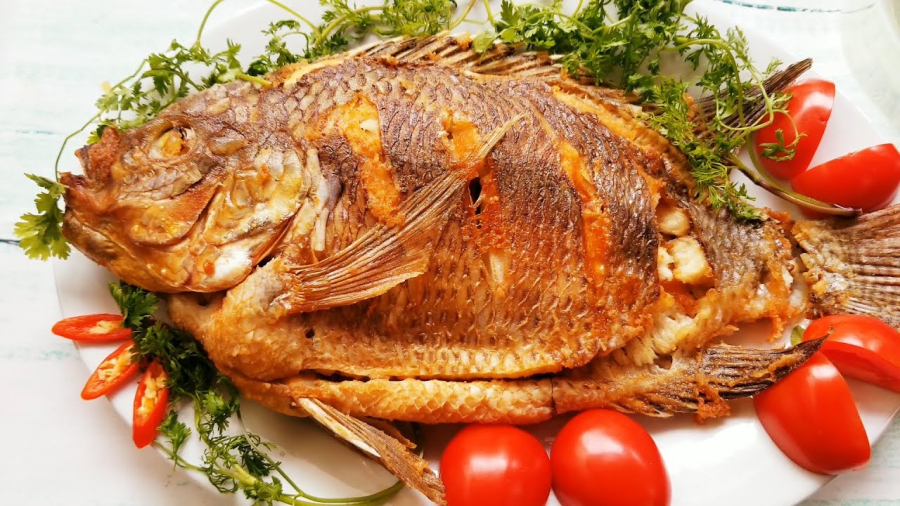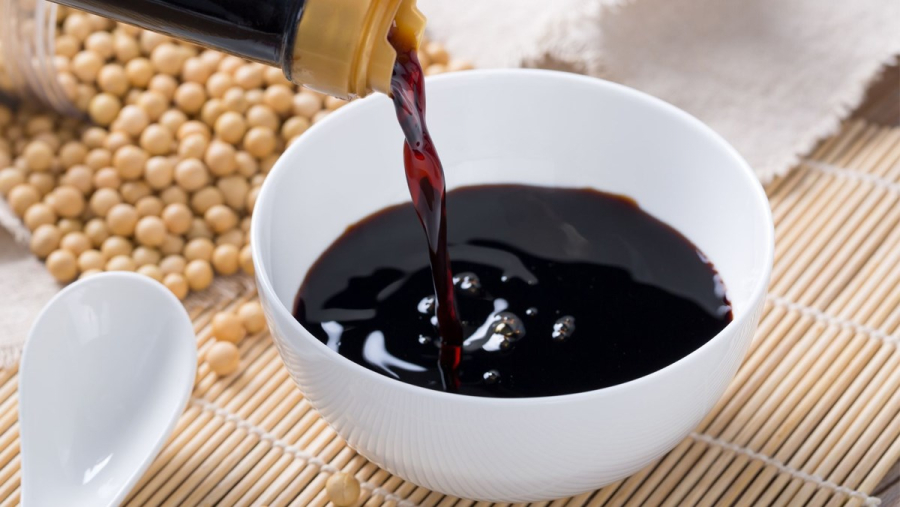Fried fish is a familiar dish in Vietnamese families. So, how do you fry fish without it breaking or sticking to the pan?
Use salt

Salt is a familiar spice, readily available in every kitchen. And a simple and popular way to fry fish without it breaking is to use salt.
After buying the fish, remove the scales and rinse it clean. You just need to rub salt all over the fish to remove the slime, let it sit for 30 minutes, then rinse it off. Use a cloth to dry it, and score the fish with a knife to make it crispier when fried.
When frying the fish, add plenty of cooking oil, a little salt, and a little lemon juice to the pan. Stir it well. Then, simply put the fish in to fry.
Adding salt will prevent the oil from splattering, make the fried fish firmer and more delicious, crispy and not break apart.
Dip the fish in flour

To make the fish crispy and flavorful, you can also dip the fish in a thin layer of flour before putting it in the pan. This method also prevents the oil from splattering and the fish from sticking.
Use ginger to rub the pan
This is also a common trick to make the fish crispy when frying. Ginger not only prevents the fish from burning and sticking to the pan, but also helps eliminate the fishy smell.
Before starting to fry the fish, rub a piece of fresh ginger in the pan, then heat the pan, pour in the oil, and fry the fish.
Flip the fish when it’s cooked on one side
To make the fish crispy and prevent it from breaking, it’s best to fry each fish individually. When putting the fish in the pan, immediately press it down so it’s in contact with the oil. When the bottom is slowly cooked to golden brown, the top is slightly oily, this frying method ensures the fish is not fishy and does not stick to the pan. Wait until the fish is completely golden, then flip it over.
In addition, it’s also a good idea to limit frying too many fish in one pan, as it can cause the fish to crumble and prevent it from evenly becoming golden and crispy.
Dip the fish in soy sauce

It may sound strange, but this method of frying fish is also very effective. Just before frying, roll the fish in soy sauce and let it dry.
Then, heat the pan, pour in the oil, and when the oil is hot, fry the fish as usual.
This way, the fish won’t release water when in contact with hot oil, not only limiting the fish from sticking to the pan, but also making it easier to fry and evenly crispy.
For fish that has been marinated with salt, remember to rinse the fish before frying.
Don’t overcrowd the pan
Not everyone may know this. In principle, the amount of heat provided by the fire is limited, but if you put too much fish, the heat will be inadequate, leading to uneven cooking and the fish being under-cooked or overcooked. Therefore, to fry the fish evenly and prevent it from sticking to the pan, you should not put too much fish in at once.
Use alcohol

To make the fried fish intact, not peeled off, and also visually appealing, don’t forget to use alcohol.
To keep the fried fish intact, you shouldn’t flip the fish too much while frying, and don’t use too high heat. Medium heat will help the fish cook from the inside out, and the steam will escape from the fish, making it firmer.
At the same time, there is a secret to prevent the fish from sticking to the pan and make the fried fish more delicious, which is to use alcohol. When the pan is hot, boil a little rice wine or grape wine. When it’s evaporated, add cooking oil, and when the oil is hot, put the fish in to fry.


































